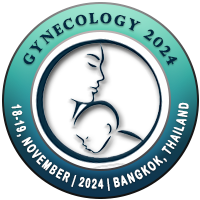
Suzanne Alamro
USAID Health Service Delivery, Amman Wadi Saqra, JordanTitle: Factors Associated with Cervical Cancer Screening Uptake: Implications for the Health of Women in Jordan
Abstract
The existing factors that influence cervical cancer screening uptake worldwide do not necessarily reflect the situation in Jordan. Therefore, the aim of this study was to determine the factors associated with cervical cancer screening uptake among Jordanian women. Methods. In this cross-sectional study, 500 married Jordanian women aged 21 to 65 years were recruited from eight nongovernmental organisations and community settings in Amman. Data were collected with a self-administered questionnaire regarding sociodemographic and reproductive data, a health utilisation data form, and scales on the perceived benefits of screening, perceived barriers to screening, perceived susceptibility to cervical cancer, and perceptions regarding the severity of cervical cancer. Descriptive statistics, multivariate logistic regressions, and independent t-tests were used in the data analysis. Results. Among the 500 age-eligible women, only 156 (31.2%) had been screened for cervical cancer. Healthcare provider encouragement, years of marriage (odds ratio ðORÞ = 5:24, confidence intervalðCIÞ = 95%, p = 0:00), and use of the private healthcare sector (OR = 2:20, CI = 95%, p = 0:012) were significant predictors of cervical cancer screening. Conclusion. Cervical cancer screening uptake among Jordanian women is significantly low; determining factors for the decision to undergo screening include encouragement from the healthcare provider, the number of years of marriage, and use of the private healthcare sector. To improve uptake, structured screening programmes need to be implemented in collaboration with national partners and institutions to decrease the incidence of cervical cancer in Jordan.

